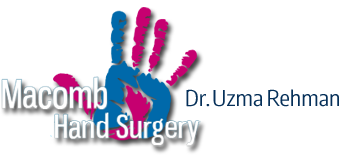Avoiding & Treating Skateboarding Hand & Wrist Injury
Is your child or teenager one of the many who asked for, and received, a skateboard this Christmas? While skateboarding can be great physical activity – and can keep kids outdoors during social distancing – there are some things parents should know to keep children safe before letting them step on their “deck.”
While skateboarding continues to steadily grown in popularity – injuries relating to the sport are also on the rise. In fact, there are about 50,000 visits to the emergency room each year due to skateboard injuries, according to the American Academy of Pediatrics! So, it is essential to take safety precautions to minimize the chance of injury – especially when adolescents and teens are first learning to skateboard.
In this article, board certified Bloomfield Hills hand doctor Uzma Rehman, MD offers safety tips to help protect kids from hand, wrist, arm, finger, elbow or shoulder injuries while having fun on their skateboards.
Ways to Prevent Skateboarding Injury
#1. Use Proper Skateboarding Equipment
It should go without saying that a helmet is essential for any child (or adult) who is skateboarding. But, while a helmet is essential to protecting the head, brain and face, a helmet will not prevent injuries to the limbs.
Protective equipment should also include elbow pads, knee pads and wrist guards. These can absorb the shock of the fall and prevent or at least minimize some injuries.
#2. Skateboard on the Right Surface
Encouraging your teen to skateboard on professionally constructed equipment in controlled environments – like a skate park – is preferable to skateboarding on sidewalks, curbs and steps that may have cracks or be rough and uneven.
And make sure that your child understands and agrees to follow the rules of the skate park. The regulations are in place specifically for the skateboarders’ safety.
Skateboarders should also be prohibited from boarding on streets where there are cars, and sidewalks or plazas where are pedestrians.
#3. Learn to Fall Properly when Skateboarding
Teach children NOT to put their hand or arm out to break their fall. The impact of landing on an outstretched hand can lead to breaks or sprains of the elbow, wrist, fingers or shoulder.
Skateboarders should practice trying to absorb the impact of a ‘wipe out” by rolling into the fall using the “tuck and roll” technique. This method disperses the impact of the fall across the whole body, putting less force on the more fragile limbs and joints.
#4. No Headphones or Earbuds When Skateboarding
Teens love music! But they need to be able to hear their surroundings when skateboarding. Wearing headphones can prevent them from hearing an approaching pedestrian, cyclist, car or other traffic nearby – and result in a collision.
#5. Exercise “Common Sense” When Skateboarding
Kids can get so wrapped up in their passion for skateboarding, that parents may need to remind them of some basic “common sense” skateboarding rules:
- Stay hydrated! Bring water and stop to drink it.
- Rest every couple of hours, even if you aren’t tired.
- Do not skateboard in the rain, snow or during lightening.
- Do not ignore pain or swelling from a fall – get it checked by an adult.
Skateboarding Hand or Wrist Fractures
Wrist and hand injuries are the most common skateboarding injuries. Skateboarders inevitably suffer many superficial bumps, bruises and scrapes that they can “brush off”. But sprains and fractures (broken bones) require immediate medical attention to avoid long-term or permanent joint damage or mobility issues.
When you should see a doctor for a skateboarding injury:
- If there is any swelling
- If the hand or wrist is hard to move, or can’t move at all
- Whenever pain is Intense or excruciating
- Milder pain and/or tenderness that lasts for more than a day or two
- Any visible deformity like a shortened finger, crooked arm or depressed knuckle
Skateboard Injury Doctor – Bloomfield Hills
If your child is suffering from any pain, swelling or deformity in their fingers, wrist, elbow, shoulder or arm, after a skateboarding fall, contact board certified hand surgeon Doctor Rehman for a comprehensive evaluation and consultation.
Especially in children, early detection, diagnosis and treatment is the most effective way to minimize pain, and prevent long-term complications or permanent damage that can limit mobility or functioning for the rest of their life.
Doctor Rehman will assess your child teen’s individual situation, and prescribe the treatments that are best for their condition – so they can safely get back to their regular activities as soon as possible.

